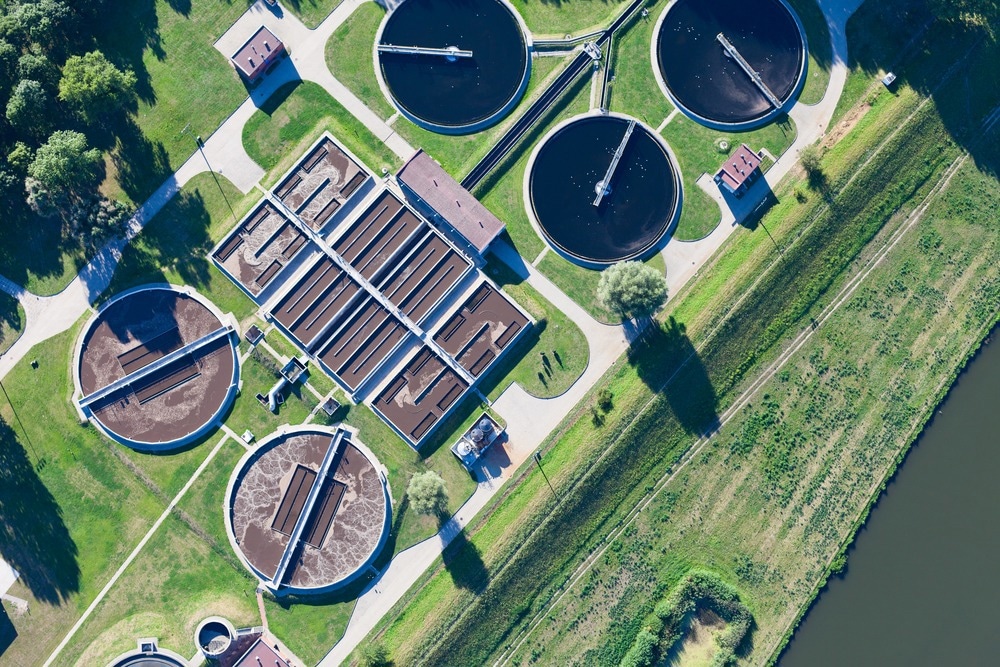 By Surbhi JainReviewed by Susha Cheriyedath, M.Sc.Jun 22 2022
By Surbhi JainReviewed by Susha Cheriyedath, M.Sc.Jun 22 2022In a review recently published in the open-access journal Polymers, researchers presented a holistic view of advanced polymeric nanocomposites for applications in water treatment.

Study: Advanced Polymeric Nanocomposites for Water Treatment Applications: A Holistic Perspective. Image Credit: Mariusz Szczygiel/Shutterstock.com
Background
Human activities have compounded serious environmental and conservation concerns in recent decades. Nanomaterials could be a realistic and effective way to overcome major roadblocks in the development of effective remedial technologies for environmental protection. However, the volume of industrial chemicals has expanded rapidly during the last century. As a result, novel materials are required to clean up the damaged environment as soon as possible.
Nanostructured sorbents can be designed to target specific pollutants and have a high capacity for treating dirty water. Recent advancements in the creation of polymer nanocomposites (PNC) have increased their potential for novel uses in pollution clean-up. Polymer nanocomposites have been used to remove a variety of chemical contaminants from wastewater.
Individual components working alone would not be able to attain the synergistic properties of polymer nanocomposites. To make a PNC with improved qualities for a specific application, inorganic nanofillers can be added to a polymer matrix. Due to their wide range of applications in environmental remediation and tackling diverse environmental issues, polymer nanocomposites have acquired scientific significance.
About the Study
In this study, the authors examined the synthesis and application of various polymeric nanocomposites in water treatment, as well as the primary factors that determine their performance, as well as future research difficulties and considerations.
The team looked at the current state of polymeric nanocomposites as the materials for water remediation all over the world, which included different categories, state-of-the-art synthetic processes, merits, limitations, applications, and potentials. The literature scope for this review was based on SCOPUS and Web of Science published articles and books.
The researchers used several search keywords such as polymeric material, photocatalyst, organic pollutant, polymer nanocomposite, adsorbent, photocatalytic degradation, heavy metal, adsorption, and water treatment.
Observations
The membranes improved in hydrophilicity, porosity, heterogeneity, net surface charge, and mean pore width after they were loaded with a 1 wt.% carbon molecular sieve (CMS). The addition of 1 wt.% CMS to polyethersulfone (PES) increased pure water flux from 55.77 to 75.05 L/m2.hr. The functionalized silica-gelatin hybrid aerogel with a 24 wt.% gelatin content was suited for aqueous Hg (II) adsorption with good efficiency and selectivity. In the presence of 0.1 mg/mL aerogel adsorbent, the cells lost viability only at Hg(II) concentrations larger than 500 ppm. After 20 minutes of irradiation, the dye degradation of polyoxometalate (POM)-dendrimer was 83%, compared to 11% for POM.
Several studies reported that water pollution was still one of the most serious problems in the modern period, and water treatment technologies evolved over time to accommodate the growing need for safe drinking water. Massive research has gone into the building of selective and efficient polymeric adsorbents and membranes during the last few decades. The development of non-toxic, cost-effective, biocompatible, and efficient polymeric nanocomposites is still a work in progress. To increase the thermophysical, mechanical, and physicochemical properties of polymer nanofillers, nanocomposites and/or nanoparticles were dispersed in polymeric matrices such as dendrimer, resins, cellulose, and so on. Polymer nanocomposites could be created by the usage of a variety of procedures.
Selective laser sintering and microwave-assisted procedures were reported to be emerging technologies for polymer nanocomposite creation. Available and emerging strategies attempted to create polymer nanocomposites with uniform dispersion and low flaws that were durable, efficient, and cost-effective. To remove chemical pollutants from aqueous media, polymer nanocomposites were used as filtering membranes and adsorbents.
The development and implementation of polymer nanocomposites in water and wastewater treatment had enormous promise due to the synergy between adsorption and membrane filtration techniques. Polymeric membranes demonstrated exceptional ability to remove both established and developing chemical contaminants from water. Plasma-assisted mechanochemistry and atomic layer deposition were identified as solutions to the problem of nanoparticle aggregation in melt-mixing procedures in the manufacture of polymer nanocomposites.
Sonication at high frequencies was also beneficial to mixing procedures. The development of thermodynamically stable polymeric nanocomposites was possible thanks to in situ polymerization. Electrospinning was a quick and easy approach to making porous materials. Furthermore, the prevention of aggregation was a clear advantage of the production of nanocomposites with selective laser sintering.
Conclusions
In summary, this study elucidated that a variety of materials were favorable for adsorptive membrane applications, such as dendritic, cellulosic, biopolymeric, and different polymeric composites. However, using polymeric nanocomposites as adsorbents or membranes had a number of drawbacks, including processing, human and environmental health, and scalability and adaptability for industrial and field applications.
The authors believe that future research should focus on overcoming these challenges in order to utilize polymeric nanocomposite adsorbents and membranes in the water treatment sector successfully and sustainably.
Disclaimer: The views expressed here are those of the author expressed in their private capacity and do not necessarily represent the views of AZoM.com Limited T/A AZoNetwork the owner and operator of this website. This disclaimer forms part of the Terms and conditions of use of this website.
Source:
Adeola, A. O., Nomngongo, P. N., Advanced Polymeric Nanocomposites for Water Treatment Applications: A Holistic Perspective. Polymers 14(12) 2462 (2022). https://www.mdpi.com/2073-4360/14/12/2462